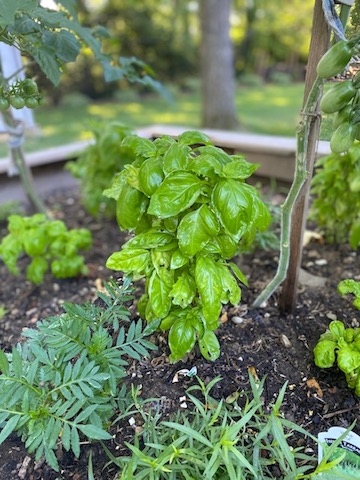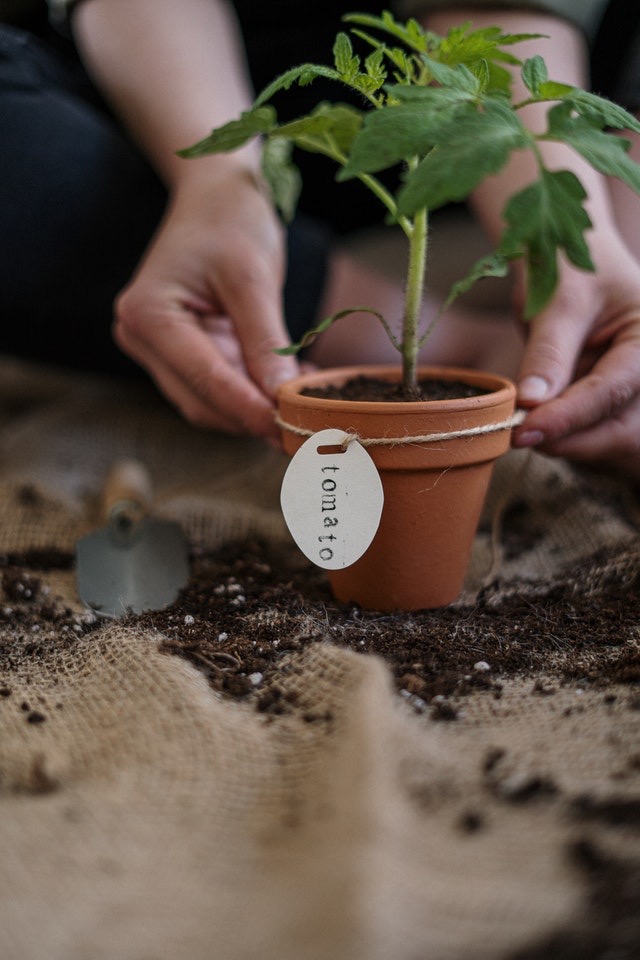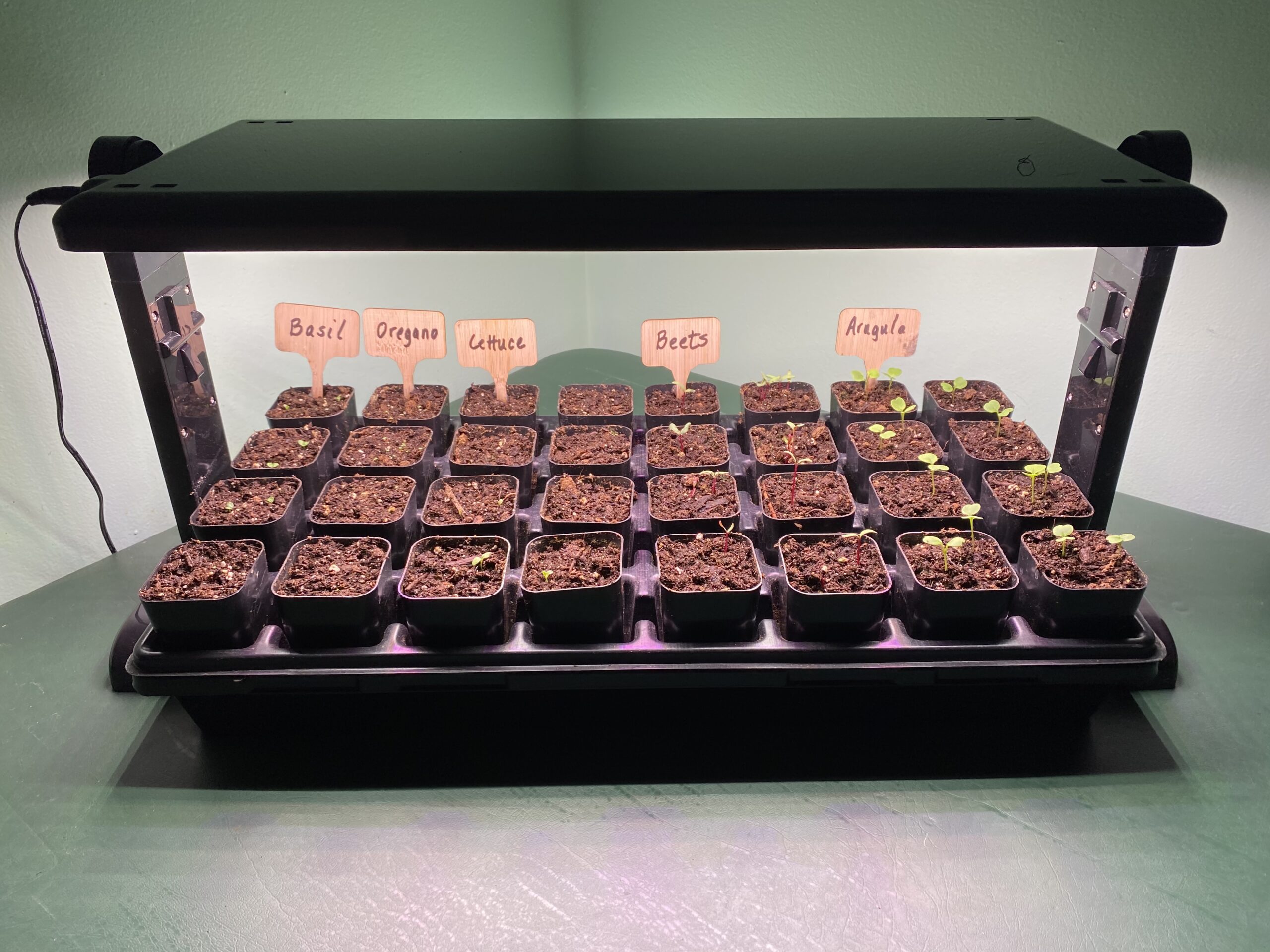How to Prepare Your Garden for the Upcoming Growing Season + 5 Ways to Garden
This is the time of year that I always start getting excited about the upcoming spring season and what I want to plant in my gardens. In many places the snow may still cover the ground, but as I see April coming around the corner, I realize the opportunity for some early spring planting for cool weather plants. It is also time to begin making plans for how I can expand or add to my outdoor gardening experience. As you begin thinking about what you would like to grow in your garden this year, imagine big but start small.
Depending on where you live, multiple seasons may be available for growing different produce. I live in Ohio, so I take advantage of the early spring growing season. I can grow produce that grows well in cooler weather which include: lettuce, spinach, kale, onions, leeks, arugula, bok choy, broccoli, cauliflower and cabbage.
Later in the spring when the temperatures increase, I will be able to plant my second set of crops and continue harvesting the first set of crops.
How do you plan on gardening this year?
In my yard I use multiple gardening techniques to maximize my gardening space. On the south side of my home full sun shines on our 6′ x 25′ in-ground garden. In order to add more gardening space to this sunny location, additional container gardening bags are on the cement walkway and stoop alongside the in-ground garden. Most of the backyard is either partial or full shade leaving limited areas to expand my gardening. In the one corner of the backyard where there is partial sun my husband and I built a raised bed. I have had success growing cool weather plants, lettuces, spinach, garlic as well as warm weather plants, herbs and tomatoes in my raised bed. Indoor gardening provides a head start on the growing season and lessens the amount of plants needed for purchase.
I have listed five different ways you can garden at your home. Whether you live in a house, condo or apartment with a yard or with limited outdoor space you have opportunities to get your hands dirty with soil and enjoy the outdoors along with the healthy, whole foods you grow yourself.
Container Gardening
I use a variety of containers including plastic, clay and cloth. I recently became introduced to cloth containers that come in various sizes and are economical. They are available on Amazon or at your local hardware store. The felt will last for many seasons if placed on a hard surface like a deck or concrete area rather than on soil or grass where it may deteriorate more quickly. It is also best to empty and store away when not using. I have planted flowers, herbs and some vegetables in the felt containers. When deciding what to plant in your felt containers make sure you have the space and depth needed. I purchased these at Amazon in the 10-gallon size.


Raised Beds
My husband constructed a raised bed last year that measures 4′ x 8′. It is made out of cedar, which is naturally rot-resistant. The raised bed will last 10-20 years and does not require any chemical treatments. Pine and spruce will also work and are more cost-effective but being a softer wood will only last 7-10 years. Raised beds can be at a height that fits for your comfort, from a foot high to waist height. It is important when you are deciding what wood to use that you do not use wood that has been chemically treated with any toxic preservatives.
In the raised bed, I chose for it to be waist height so I could work in the garden for easy access while standing. To fill the raised bed, I first filled the bottom with about two feet of logs and branches, some more rotted and decaying than others. Then I added wood chips, straw and leaves on top. I chose organic soil to top off the last foot of the raised bed and mixed in some compost. Each year supplement your raised beds with organic material and additional soil to top off your raised beds.

In-Ground Garden Beds
In-ground garden beds use a space that is flat, well drained area with plenty of sunshine. This is a cheaper way to garden because in-ground gardening doesn’t require extra materials. If growing a larger garden, make sure that you have pathways so that you have access to all of your plants. The money saved in building raised beds can be used for amending the soil with organic matter. In-ground gardens require less watering because they remain more moist than raised beds.
Community Gardens
Some people who live in the city or without any available space for gardening can research and locate a local community garden. In community gardens, you can rent a plot of land and garden alongside others who also enjoy gardening. This could also be an opportunity to meet others, exchange ideas and seeds and to help out fellow gardeners.

Indoor Gardening
Mini gardens on a windowsill are an option for those only wanting to grow a plant or two. Growing a couple of herbs in a windowsill or on a counter next to the window may be the beginning of gardening for some or just enough for others. Set in windows with south facing sun, or one that has the most sunlight throughout the day.
What to grow in your garden this year
As you are thinking about what you want to plant in your garden this year, drawing or designing a map can help you in configuring your space and how to make the most of your garden space. Rotating your plants is important to maintain soil structure and nutrients when mapping out your garden. Dating and sketching out your garden can provide you with information year to year on where your vegetables, flowers and herbs are planted.
Companion planting can help to improve plant growth and can assist in ridding insects from your plants. It also allows you to use your space more efficiently with growing plants more closely together. This offers a larger harvest with more varieties. Read here for more information for which vegetables/herbs/flowers to plant together.
Once you have your garden plan developed, you will want to determine when to plant certain crops you are choosing to grow. First, look here to determine the hardiness zone you live in to guide you in planning your vegetable planting schedule. Multiple growing seasons can be done in many of the zones. Beginning some of your planting indoors when it is still too cool for seeds to germinate outdoors can give you a head start to the growing season. These plants can then be transplanted outdoors when the temperature is safe for the plant.
Seed Starting Indoors to Prepare for Outdoor Gardening
Planting seeds indoors can help to get a head start in outdoor planting. Several weeks before you are ready to plant outdoors, begin your seeds indoors. Moisten seed starting soil in a bucket and fill your small pots. Plant a couple of seeds in each container and spray gently with a water bottle to moisten the seeds. Bottom watering is an alternative way of watering where the water is placed in a tray where small pots are sitting. The water soaks up through holes in the bottom of the pots and into the soil to encourage deep roots. Fertilizer can be added to your bottom watering as suggested. I use Miracle Gro Quick Start Planting and Transplanting Starting Solution to provide nutrients and to stimulate root growth.

In order for the seedlings to germinate, they will need warmth. You can set them on a hot water tank, place a warming mat underneath, or cover the pots with a plastic covering. If you cover your pots make sure to have small holes for air. Mist the plants each day and keep the plastic on the plants until seedlings emerge. At this time you can take off the plastic covering and place under lighting for 12-16 hours a day to assure strong stems. Shown in the picture is an AeroGarden. Continue to spray and bottom water as needed.
Once the roots have filled the bottom of the container they are ready to be transplanted outdoors. Before moving them outdoors, set them outside in the sun for a couple of hours each day increasing the time over a period of a week to harden off the plants. Bring them in each night and only take them out to harden if the temperature is over 45 degrees so the plant is not damaged by the cold temperatures.
Amend your soil for rich, healthy plants
As you plan your garden keep in mind rich nutrient soil is the key to any garden. When planting in-ground gardens, the pH of the soil will need to be determined to see if it requires any amending due to acidic or alkaline soil. Sandy or clay soil may also need organic material added to either hold water and nutrients or for aeration and drainage. Organic material is the fuel for plant growth anywhere you choose to garden. Compost and aged cow or horse manure are good sources of organic matter.
Compost can be created at your home with a variety of carbon and nitrogen materials including kitchen scraps, leaves and grass clippings. Rich soil is developed over time as you continue to add organic matter to your garden. Some other techniques you can use to improve the soil include rotating crops year to year, planting cover crops in off-seasons so the ground or soil is never bare, limit tilling that damages the soil, and most importantly NEVER use any type of chemical. Chemical fertilizers poison the soil and the food you are growing.
Create a garden space that is relaxing and brings you joy
As you are designing your garden find ways to create spaces that can bring you some relaxing moments. The hope is that working in your garden, whether a flower garden, a vegetable garden or any other gardens, that you find spaces that will give you an opportunity to enjoy your garden both while you are working with your hands in the soil and your face in the sun and while you relax with a book, drink or watching pollinators as they pollinate your vegetable flowers. A list of suggestions for your garden are as follows:
- A variety of plants that have fragrance, beauty or attract wildlife – birds, bees, butterflies – to your garden.
- Comfortable seating in and around your garden for both sun and shady locations. Seating can be a hammock, comfortable chairs with cushions, a swing or a nook for privacy.
- Wind chimes can bring a mood-lifting touch to your garden either lively or calming.
- Water is an important feature that can boost the aesthetics of your garden space and bring a calming atmosphere. Many options for water include a bird bath, a pot or water fountain, a small rock or another type of waterfall or a pond. DIY ideas are available to bring down the cost of adding a water feature to your garden. Here is an idea for a DIY pot fountain I would like to make this summer.
How will you garden this year?
As you plan your garden this season, whether you are new to gardening or have been gardening for years, consider starting small at first and each year adding one new element to your garden. Each year gives new opportunities for expanding and changing your garden with new plant varieties and garden spaces. Maybe this year it is as simple as adding a bench to a place in your garden where you would enjoy the bounty and mood of your garden. Planting a new variety of a plant, considering a pollinator garden, or composting may be some other ways you can make an addition to your garden.

Hi my name is Victoria! After years of struggling with illnesses, I began a journey of finding healthier alternatives in every aspect of my life. Over the past 7 years, I have researched health, nutrition, sustainability and gardening, and I am looking forward to sharing that knowledge with you!